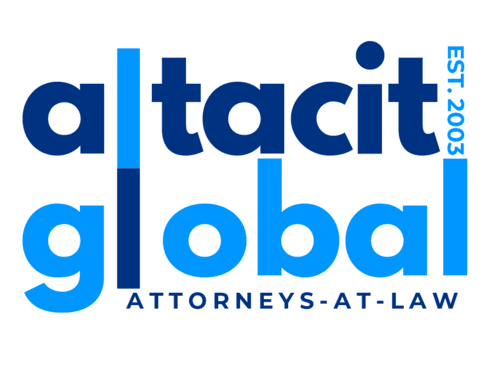Geographical Indications
Consider the following examples that illustrate the importance of source indicating capacity of a product. The American company Anheuser-Busch (A-B) was using the trademarks “BUDWEISER” & “BUD” since 1876 for identifying its main product beer. The Czech Republic claims that “BUDWEISER” & “BUD” are geographical indications for beer from the town of Ceske Budejovice and under this claim the Czech Republic has successfully cancelled A-B from using the trademarks in Austria, Israel, Portugal & Switzerland. The mark “MADE IN PARIS” for perfume originating in USA was held to be geographically deceptive. These issues at the international for make it important to be familiar with the term Geographical Indications (GI’s).
The term geographical indication was used for the first time in international Intellectual Property laws in the TRIPS Agreement of the WTO, which came into force in 1995. GI’s are defined at Article 22(1) of the TRIPS Agreement, as “indications, which identify a good as originating in the territory of a Member, or a region or a locality in that territory, where a given quality, reputation or other characteristic of the good is essentially attributable to its geographic origin.” TRIPS Agreement also provides for an “enhanced” minimum level of protection for GIs that identify wines and spirits. Prior to TRIPS Agreement some international treaties such as the Paris Convention, the Madrid Convention & the Lisbon Agreement contained provisions on the protection of indication of source and appellations of origin.
In the current fast changing global economy GI’s are emerging as an important intellectual property tool. Some well-known GIs are “Darjeeling Tea” from India, “Chianti Wine” from Italy, and “Champagne Wine” from France; “Tequila Spirit” from Mexico; “Idaho Potatoes” from USA; “Swiss Chocolates” from Switzerland. All these names typically convey an assurance of quality & distinctiveness, which is essentially attributable to the fact of its origin in that, defined geographical locality, region or territory.
Geographical Indications are similar to trademarks in that they function as source indicators. However, the key distinction lies in the fact that while a trademark identifies a good or service as originating from a particular producer, a geographical indication identifies not the producer of the good concerned, but the geographical region from where the product originates.
In the present expanding global economy GI’s are significantly emerging as an important intellectual property. Countries and trade organizations are increasingly recognizing that GI’s are valuable as ‘marketing tools’ in the global economy. Interestingly some WTO members believe that GIs no matter where created or protected should always be superior in right to a trademark. Geographical Indications prevent misuse of designation or presentation of a product, which indicates that the product originates in a place different from where it actually originates.
For example using “Darjeeling” for tea, which was not grown in the tea gardens of Darjeeling, is detrimental to consumers and legitimate producers. For wines and spirits such geographical indicators will be prevented even if true origin of the product is indicated. An example is the word ‘Champagne’ that is claimed exclusively by the Champagne region of France, which is the geographical region from which the wine derives its world famous name. No other wine, even if it is made from the same grape variety, by the same method, and is identical in taste, aroma and other qualities, can be called ‘Champagne’. Example the usage of the phrase “Champagne made in USA” is prohibited although it is not deceptive.
However, the exceptions to protections are if the GI becomes generic that is if the name of a place is used as the designation of a kind of product, rather than an indication of the place of origin of that product, this term no longer functions as a geographical indication. For example, “Dijon Mustard,” a style of mustard originally from the French town of Dijon has over time come to denote a certain kind of mustard, regardless of its place of production, whereas “Dijon mustard” was once only made in Dijon
India has made a significant move in compliance with its commitment under the TRIPS by enacting the Geographical Indications of Goods (Registration & Protection) Act, 1999. The significance of this Act is it confers legal protection to Geographical Indications in India, prevents unauthorised use of a Registered Geographical Indication by others, provides legal protection to Indian Geographical Indications which in turn boost exports & promotes economic prosperity of producers of goods produced in a geographical territory.
Under the Geographical Indications of Goods (Registration & Protection) Act, 1999 any association of persons, producers, organisation or authority established by or under the law can apply for protection of GI. The only criterion is that the applicant must represent the interest of the producers. The registration of a geographical indication is valid for a period of 10 years and can be renewed successively for further period of 10 years each. A registered geographical indication cannot be assigned, transmitted, mortgaged, pledged or licensed.
In today’s fast moving global economy developing countries need to ensure that valuable GI’s do not become generic or semi-generic in export markets. India, which passed the GI Act in 1999 subsequently, framed the rules for the same in 2000 and in August 2001 the first Geographical Indications Registry was set up in Chennai. The Act has come into force as of September 15, 2003. The need of the hour is to create awareness about the importance and protection of GI so that interested parties come forward to register GI. Simultaneously we can ensure compliance by other countries under the reach of the TRIPS and combat piracy of GI’s.
Co-Authored by Dr. Sudhir Ravindran
Altacit Global




